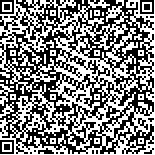| This article has been:Browse 1512Times Download 1203Times |

scan it! |
|
|
| DOI:10.13522/j.cnki.ggps.20180254 |
|
| The Effects of Drip-irrigation Amount on Photosynthesis, Yield and Water Use Efficiency of Kiwifruit |
|
ZHANG Xiaoxing, FAN Yi, CUI Ningbo, LI Chen, HU Xiaotao, GONG Daozhi
|
|
1. State Key Laboratory of Hydraulics and Mountain River Engineering & College of Water Resource and Hydropower,Sichuan University,Chengdu 610065,China; 2. Sichuan Provincial Water Conservancy Research Institute, Chengdu 610072, China; 3. Provincial Key Laboratory of Water-saving Agriculture in Hill Areas of Southern China, Chengdu 610066, China; 4.Integrated Management Center,Changjiang Water Resources of Commission of the Ministry of Water Resources, Wuhan 430015, China; 5. Key Laboratory of Agricultural Soil and Water Engineering in Arid and Semiarid Areas,Ministry of Education,Northwest A&F University/Institute of Water-saving Agriculture in Arid Areas of China, Yangling 712100, China; 6. State Engineering Laboratory for Efficient Water Use and Disaster Loss Reduction of Crops, Institute of Environment and Sustainable Development in Agriculture, Chinese Academy of Agriculture Science, Beijing 100081, China
|
| Abstract: |
| 【Objective】This paper aims to provide a drip irrigation schedule during fruit expansion (Ⅲ) and fruit maturity stage (IV) of a seven-year old Jin Yan kiwi, based on the effects of irrigation amount during the two stages on photosynthesis, grain yield and water use efficiency of the kiwi.【Method】The field experiment examined five irrigation amounts: sufficient irrigation (CK), high irrigation using 85% of water used in CK (HW), middle irrigation using 75% of water used in CK (MW-1), moderate irrigation using 65% of water used in CK (MW-2), and low irrigation using 55% of water used in CK (LW).【Result】Deficit irrigation had a significant impact on photosynthesis, with the photosynthetic rate, transpiration rate and stomatal conductance all decreasing as water deficiency increased. The instant water use efficiency under water deficiency was -4.83% to 14.05% higher than that under CK, and the photosynthetic rate under Ⅲ+HW and Ⅳ+HW treatment was not significantly lower than that under CK (P>0.05), being 5.09 μmol/(m2·s) and 5.99 μmol/(m2·s) respectively. The yield under water deficit irrigation was 11 066.7~10 385.6 kg/hm2, only 0.09%~6.24% lower than that under CK but increasing water use efficiency by 2.82%~23.16%. The water deficiency in III+HW and IV+MW-1 reduced the yield by 0.09% and 2.45% respectively, with their associated water use efficiency increasing by 2.82% and 10.73% respectively. 【Conclusion】Overall, high irrigation amount during fruit expansion stage coupled with a moderate irrigation amount during the fruit maturity stage can considerably improve water use efficiency, saving 2.50% to 11.62% of water, with only a slight compromise in yield, compared to the CK. It is therefore the most water-saving effective schedule to drip-irrigate the kiwi in the studied region. |
| Key words: drip irrigation; irrigation amount; kiwifruit; photosynthetic traits; yield; water use efficiency of yield |
|
|